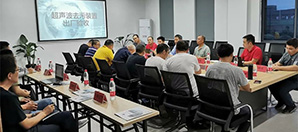Deputy Minister of Environmental Protection and Director of the National Nuclear Safety Administration Li Ganjie said at the third nuclear power group nuclear accident emergency rescue work symposium on the 5th that my country is establishing a "green channel" for emergency rescue of nuclear accidents across nuclear power plants.
On the 5th, the Ministry of Environmental Protection (National Nuclear Safety Administration) took the lead in organizing China National Nuclear Corporation, China General Nuclear Power Corporation, China Power Investment Corporation, State Nuclear Power Technology Corporation, and China Huaneng Group Corporation to jointly sign the "Nuclear Power Group Corporation Nuclear Accident Emergency Mutual Rescue Cooperation Framework Agreement.
On the same day, relying on the advantages of Daya Bay Nuclear Power Base's human resources, technical reserves and sophisticated equipment, China General Nuclear Power Group strengthened overall leadership, increased funding, and deepened the integration of forces. It was the first to set up a group-level nuclear accident emergency rescue team and listed it.
Li Ganjie said that the signing of the mutual rescue framework cooperation agreement and the establishment of the nuclear power group's emergency rescue force are another important breakthrough in my country's nuclear safety improvement actions after the Fukushima nuclear accident. The signing of the agreement greatly facilitated the implementation of specific operational-level mutual rescue plans between adjacent nuclear power plants across nuclear power groups, ensuring the timeliness and effectiveness of mutual rescue operations, and marking the major nuclear power group companies in my country in the field of nuclear accident emergency response. The establishment of a nuclear emergency work community has basically achieved the goal of building nuclear power plants' nuclear accident emergency capabilities and sharing emergency resources across the country.
Li Ganjie pointed out that in the implementation of nuclear power group nuclear accident emergency rescue team and base construction, a "two-step" strategy can be adopted: first rely on operating nuclear power bases to establish group-level regional rescue centers, and gradually transition to establishing physical headquarters rescue bases and rescue teams. . At present, the first step is to move forward steadily and make significant progress; the second step is to strengthen the top-level design, follow the principles of overall planning, combination of specialization and concurrent implementation, step-by-step implementation, and focus on actual results. A nuclear power group nuclear accident emergency rescue force that integrates, covers the whole country, is fast and effective, has complete elements, and has complete functions.
Li Ganjie emphasized that it is necessary to strengthen communication and coordination with relevant departments, clarify the positioning and interface relationship between the national nuclear emergency rescue team and the group's nuclear emergency rescue team, avoid redundant construction and multi-head management, and effectively coordinate and coordinate to strengthen the nuclear power plant nuclear accident emergency rescue force system Construction work. He hopes that the five groups can effectively strengthen the establishment and soundness of the emergency linkage mechanism and rescue mechanism between the adjacent nuclear power plants across the group, so that when they need to jointly deal with serious nuclear accidents, they can be consistent, go all out, and continue to deepen mutual rescue cooperation. , To jointly promote the emergency management of nuclear accidents in my country’s nuclear power plants and continuously make new breakthroughs.

 Company Profile
Company ProfileWhat We Believe
 History
History Environment
Environment Honor
Honor Union·Team Building
Union·Team Building Staff style
Staff style Partner
Partner

 QEHS management system
QEHS management system Intellectual Property Managemen
Intellectual Property Managemen Certification
Certification
 Entreprise's news
Entreprise's news Industry Information
Industry Information